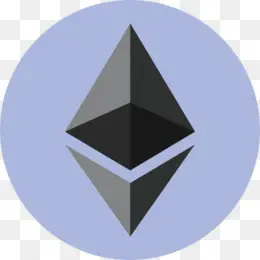Table of Contents
I watched someone get liquidated on a 50x leveraged position last week. $80,000 gone in about four seconds. The price moved 2% and that was it—account zeroed out.
Derivatives are no joke.
But here’s the thing: the crypto derivatives market in 2025 is now bigger than spot trading by a massive margin. For sophisticated traders, these instruments aren’t just about making leveraged bets. They’re essential tools for risk management, hedging actual positions, and expressing complex market views that you simply can’t execute with spot buying and selling.
The question isn’t whether to learn about derivatives. It’s whether you want to compete with one hand tied behind your back.
Futures: Locking in Future Prices
The basics everyone gets wrong
A futures contract is an agreement to buy or sell an asset at a predetermined price on a specific future date. Simple enough. But most people miss why these exist in the first place.
Sure, traders use them to speculate. Go long if you think Bitcoin’s going up, short if you think it’s going down. But the original purpose? Risk management.
Real-world hedging scenarios
Take a crypto miner. They’ve got equipment running 24/7, producing Bitcoin they won’t sell for three months. What happens if Bitcoin drops 40% before then? They’re screwed.
So they short Bitcoin futures. Lock in today’s price for their future production. Price drops? Their mining operation loses value, but their short futures position gains. Price goes up? They miss some upside but stay in business. That’s what hedging actually looks like.
Or consider a company that needs to pay employees in crypto three months from now. They know they’ll need 10 BTC. Instead of buying spot and watching it potentially drop, they can buy futures contracts. Price certainty without the immediate capital outlay.
The catch with futures
Futures have expiry dates. You need to roll positions if you want to maintain exposure beyond that date, which costs money (the difference between the expiring contract and the new one). And if you’re speculating with leverage, you can get liquidated before expiry if the market moves against you hard enough.
Most retail traders don’t use traditional futures anymore. They use perpetual swaps instead.
Perpetual Swaps: The Crypto Innovation Everyone Loves (And Regrets)
Why perps dominate trading volume
Perpetual swaps—or “perps”—are basically futures contracts that never expire. You can hold them forever if you want. This is a crypto-native invention that traditional finance didn’t have, and it’s become the most traded derivative in the space by far.
The mechanism keeping perp prices aligned with spot is called the funding rate. When perps trade above spot price (everyone’s bullish and going long), long position holders pay shorts every 8 hours. When perps trade below spot, shorts pay longs.
Funding rates usually hover around 0.01% per 8-hour period in normal markets. But during extreme moves? I’ve seen funding rates hit 0.5% or higher. That’s 1.5% per day just to hold a long position. It adds up fast.
The leverage trap
Perps offer insane leverage—50x, 100x, even 125x on some platforms. Here’s what that actually means:
With 10x leverage, a 10% move against you wipes out your entire position. With 50x leverage, a 2% move liquidates you. With 100x leverage, 1% is all it takes.
People see these big leverage numbers and think “I can turn $1,000 into $100,000!” What they don’t realize is that crypto regularly moves 3-5% in minutes. Your position can get liquidated while you’re grabbing coffee.
How to not blow up your account
If you’re going to trade perps:
- Start with 2-3x leverage, maybe 5x if you really know what you’re doing
- Use stop losses that actually protect capital, not hopeful levels
- Watch funding rates—if you’re paying 0.3% every 8 hours, that’s eating your profits
- Keep enough margin buffer that normal volatility doesn’t liquidate you
- Remember that leverage amplifies both gains AND losses
Most traders who use high leverage don’t survive their first major move against them. The ones who do survive either learned to use less leverage or got incredibly lucky.
Options: Asymmetric Risk That Actually Works
Why options are different
Options give you the right, but not the obligation, to buy (call option) or sell (put option) an asset at a specific price (strike price) by a certain date.
The beautiful thing about buying options: your maximum loss is the premium you paid. That’s it. But your potential gain? Unlimited on calls, massive on puts.
Pay $500 for a call option, worst case you lose $500. Best case Bitcoin moves 50% in your direction and your option is worth $25,000. That asymmetry is why sophisticated traders love them.
Real strategies people actually use
Covered calls for income: You own 1 BTC that you’re holding long-term. Current price is $60,000. You sell a call option with a $70,000 strike price expiring in 30 days, collecting maybe $1,200 in premium.
If BTC stays below $70,000, you keep the premium and your Bitcoin. If it goes above $70,000, you have to sell at $70,000 (missing further upside but still making $10,000 on the Bitcoin plus the premium). Either way, you’re generating income on holdings you weren’t planning to sell anyway.
Protective puts: You’re worried about a short-term drop but don’t want to sell your position. Buy a put option as insurance. Costs you the premium, but caps your downside. This is actual portfolio protection, not just speculation.
Directional bets with limited risk: Want to bet on a big move but don’t want unlimited downside? Buy a call or put. You know exactly what you can lose before you enter the trade.
The complexity most people ignore
Options involve time decay (theta), implied volatility (vega), and how the option price changes with the underlying asset (delta). I’m not going to pretend you can master this from one article—you can’t. But understand that options lose value as they approach expiry, and volatility changes affect option prices independent of the asset price moving.
This is where a solid understanding of Trading Psychology and Risk Management becomes essential. Options can mess with your head when they’re bleeding value from time decay even though you picked the right direction.
The Derivatives Ecosystem in 2025
What’s changed recently
The derivatives market has matured significantly. Institutional players are now active in crypto derivatives, which has improved liquidity and reduced some of the manipulation you saw in earlier years.
Regulated futures and options on CME, crypto-native perps on exchanges like Binance and Bybit, and now an emerging DeFi derivatives market with protocols offering decentralized perps and options. More choices, but also more complexity in understanding counterparty risk across different platforms.
Combining instruments for complex strategies
Sophisticated traders don’t just use one derivative at a time. They combine them:
- Long spot Bitcoin + short perpetual swap = market-neutral position that captures funding rates
- Long spot + sell covered calls = enhanced yield generation
- Futures spread trades between different expiry dates = basis trading
- Options spreads (buying one strike, selling another) = defined risk/reward scenarios
These multi-leg strategies require understanding how the instruments interact and having platforms that let you execute them efficiently.
Choosing the Right Platform
What actually matters
Not all exchanges are equal when it comes to derivatives:
Liquidity depth: Can you actually execute size without massive slippage? Check the order book depth before committing capital.
Liquidation engine: How does the platform handle liquidations during extreme volatility? Some exchanges have better mechanisms to prevent cascade liquidations than others.
Fee structure: Maker/taker fees, funding rate calculations, settlement costs—these eat into returns over time.
Product range: Can you trade futures, perps, and options all in one place? Or do you need multiple accounts?
Risk controls: Does the platform offer tools like auto-deleveraging protection, position limits, and margin calculators?
The YWO trading platform, for example, offers a comprehensive suite of derivatives instruments alongside spot markets, with various account types designed for different risk tolerances—from conservative hedgers to active speculators. Having these tools integrated in one place with robust infrastructure matters when you’re managing complex positions.
The Warnings Nobody Wants to Hear
Most derivatives traders lose money
I’m not going to sugarcoat this. The majority of people trading crypto derivatives, especially leveraged perps, lose money. The combination of high leverage, 24/7 markets, and extreme volatility is brutal.
Before you start:
- Trade on testnet or paper trade for at least a month
- Start with small size, really small
- Learn one instrument well before moving to others
- Never use leverage you can’t afford to lose
- Understand that funding rates, fees, and time decay all work against you
Psychological warfare
Derivatives, especially with leverage, create intense emotional swings. You’ll feel euphoric when a leveraged position goes your way, and gut-wrenching panic when it moves against you. Managing that psychological element is harder than the technical analysis.
The traders who survive aren’t necessarily smarter. They’re more disciplined, they use less leverage, and they have robust risk management systems that prevent them from blowing up.
Why Learn This Stuff Anyway?
Look, you can trade crypto without ever touching a derivative. Plenty of people do.
But if you’re serious about this space, understanding derivatives gives you tools that spot trading simply can’t provide. The ability to hedge risk, generate income from holdings, express bearish views without selling your long-term positions, and create complex risk/reward scenarios that match your actual market outlook.
The learning curve is steep. The risk is real. But the edge that comes from understanding these instruments? That’s what separates casual traders from professionals who actually make consistent returns in this market.
Just don’t start with 100x leverage on your first trade. I’ve seen how that movie ends.
Crypto Ping Pong Digest
Trash style news. You will definitely like














